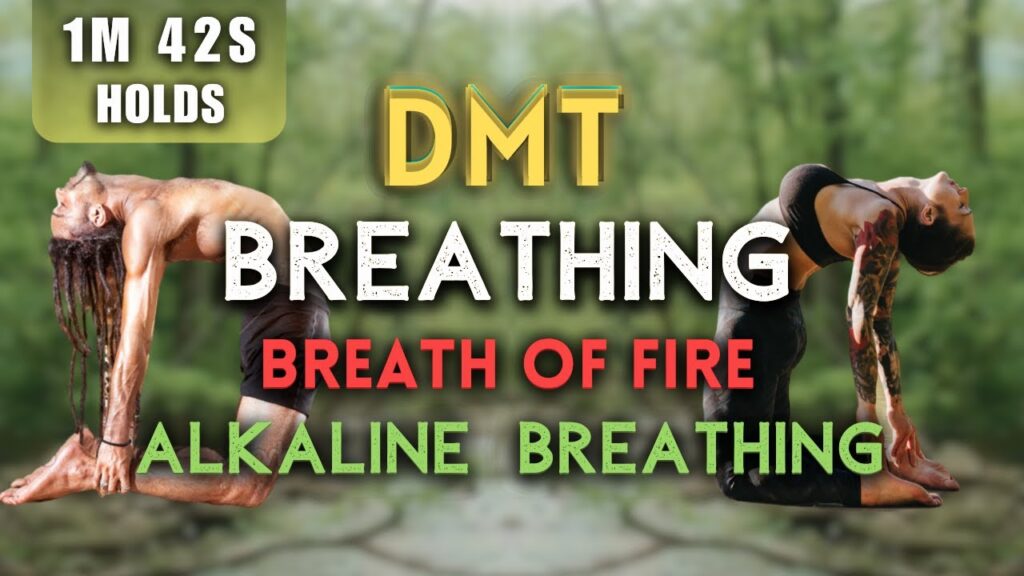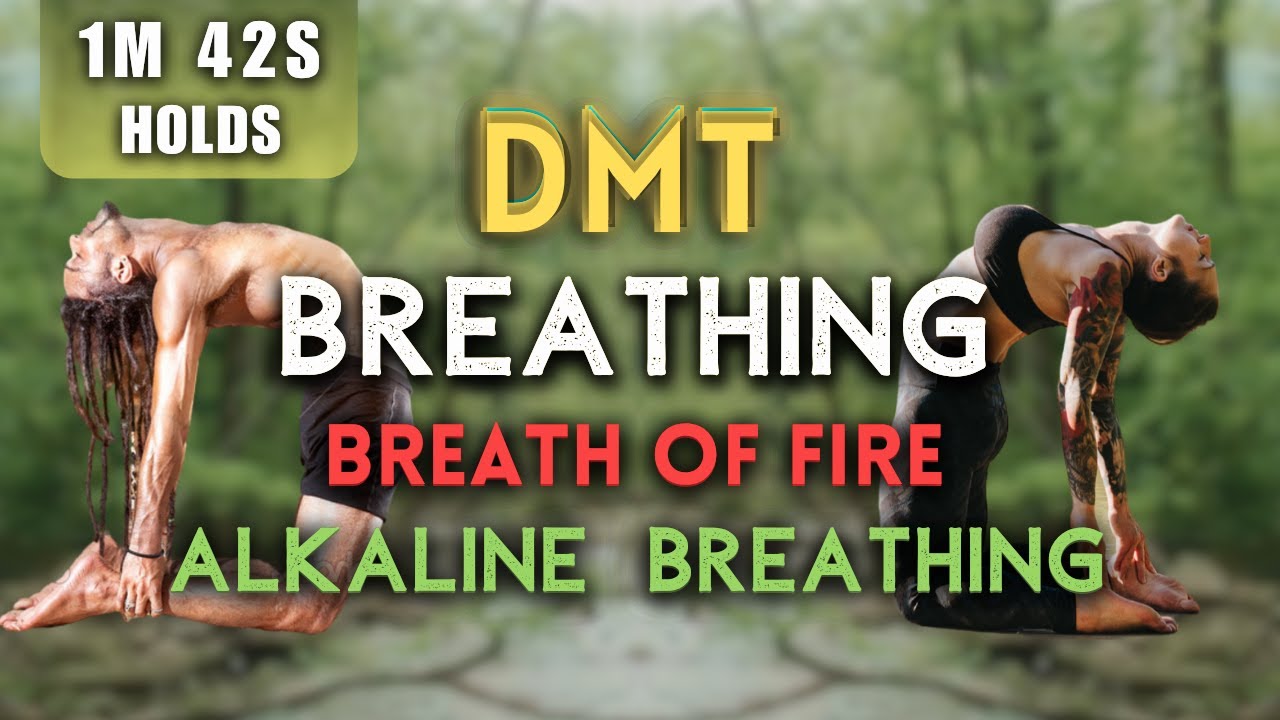
DMT Breath: Exploring the Convergence of Breathwork and Psychedelics
The term “DMT breath” has been circulating in wellness and alternative therapy circles, sparking curiosity and, at times, confusion. It’s crucial to clarify that DMT breath does *not* involve inhaling or ingesting dimethyltryptamine (DMT), a powerful psychedelic compound. Instead, it refers to specific breathwork techniques designed to induce altered states of consciousness, sometimes described as mimicking certain aspects of the DMT experience. This article delves into the meaning of DMT breath, its techniques, potential benefits, risks, and how it differentiates from actual DMT consumption.
Understanding Breathwork and Altered States
Breathwork, in its various forms, has been practiced for centuries across different cultures. Techniques range from slow, meditative breathing to rapid, rhythmic patterns. The underlying principle is that controlled breathing can influence physiological processes, impacting heart rate, blood pressure, and brainwave activity. Certain breathwork practices aim to induce a state of hyperventilation, leading to changes in blood pH and oxygen levels in the brain. These physiological shifts can result in altered states of consciousness, characterized by heightened senses, emotional release, and even visual phenomena.
The allure of DMT breath lies in its promise of accessing these altered states without the use of substances. Proponents suggest that specific breathing patterns can stimulate the body’s own natural production of endogenous substances, creating a similar experience to taking psychedelics. However, it’s vital to approach such claims with a healthy dose of skepticism and to understand the scientific basis behind these practices.
Techniques Associated with “DMT Breath”
Several breathwork techniques are often associated with the term “DMT breath.” These techniques typically involve rapid, cyclical breathing followed by breath retention. Here are some common examples:
- Holotropic Breathwork: Developed by Stanislav Grof, this technique involves deep, accelerated breathing accompanied by evocative music in a supportive setting. The goal is to access non-ordinary states of consciousness for emotional and psychological healing.
- Rebirthing Breathwork: This method focuses on connecting the inhale and exhale without a pause, aiming to release repressed emotions and trauma.
- Somatic Experiencing Breathwork: This approach combines breathwork with body awareness techniques to help individuals process and release trauma stored in the body.
While these techniques differ in their specific protocols and intentions, they share a common thread: the use of controlled breathing to induce altered states. The effects experienced during these sessions can vary widely, ranging from mild relaxation to intense emotional release and vivid imagery. The intensity of the experience depends on factors such as the individual’s physiology, psychological state, and the specific breathwork technique employed.
The Science Behind Breathwork-Induced Altered States
The physiological mechanisms underlying breathwork-induced altered states are complex and not fully understood. However, several factors are believed to play a role:
- Hyperventilation: Rapid breathing leads to a decrease in carbon dioxide levels in the blood (hypocapnia) and an increase in blood pH (alkalosis). This can affect brain activity and lead to altered perception.
- Hypoxia: Breath retention following hyperventilation can lead to a temporary decrease in oxygen levels in the brain (hypoxia), which can also contribute to altered states.
- Autonomic Nervous System Modulation: Breathwork can influence the autonomic nervous system, shifting the balance between the sympathetic (fight-or-flight) and parasympathetic (rest-and-digest) branches. This can lead to changes in heart rate, blood pressure, and muscle tension.
- Endogenous Opioid Release: Some research suggests that breathwork can stimulate the release of endogenous opioids, such as endorphins, which can contribute to feelings of euphoria and pain relief.
It’s important to note that while these physiological changes can explain some of the effects of DMT breath, they do not fully replicate the experience of taking DMT. DMT primarily acts on serotonin receptors in the brain, producing intense visual and auditory hallucinations, as well as profound shifts in consciousness. Breathwork, on the other hand, primarily affects physiological processes, leading to altered states that are often more subtle and varied.
Benefits and Risks of DMT Breath Practices
Proponents of DMT breath claim a variety of potential benefits, including:
- Stress reduction
- Emotional release
- Increased self-awareness
- Spiritual insights
- Improved mood
While anecdotal evidence suggests that these benefits are possible, it’s important to approach them with caution. Scientific research on the efficacy of DMT breath is limited, and more rigorous studies are needed to confirm these claims. Furthermore, DMT breath practices are not without risks. Hyperventilation can lead to dizziness, lightheadedness, tingling sensations, and muscle spasms. In rare cases, it can also trigger panic attacks or seizures. Individuals with certain medical conditions, such as cardiovascular problems, respiratory issues, or a history of mental illness, should consult with a healthcare professional before engaging in DMT breath practices.
DMT Breath vs. Actual DMT: Key Differences
It’s crucial to emphasize the fundamental differences between DMT breath and the consumption of DMT. While both can induce altered states of consciousness, the mechanisms of action and the intensity of the experience are vastly different.
DMT Breath:
- Relies on physiological changes induced by controlled breathing.
- Effects are typically more subtle and varied.
- Duration of effects is generally shorter.
- Does not involve the direct activation of serotonin receptors by exogenous substances.
- Potential risks include hyperventilation-related symptoms.
Actual DMT:
- Involves the direct consumption of a psychoactive substance.
- Effects are typically much more intense and predictable.
- Duration of effects can vary depending on the route of administration.
- Directly activates serotonin receptors in the brain.
- Potential risks include anxiety, paranoia, and psychological distress.
The comparison to actual DMT is often used as a marketing tactic to draw individuals to breathwork. While breathwork can be beneficial, it is not a replacement for genuine psychedelic experiences, and it is important to understand the distinction. [See also: Psychedelic Therapy: A Comprehensive Overview]
Safety Considerations and Responsible Practice
If you are interested in exploring DMT breath practices, it’s essential to prioritize safety and responsible exploration. Here are some key considerations:
- Consult with a healthcare professional: If you have any underlying medical conditions, consult with your doctor before engaging in DMT breath practices.
- Seek guidance from a qualified facilitator: Choose a reputable and experienced breathwork facilitator who can provide guidance and support during the session.
- Create a safe and supportive environment: Practice in a comfortable and distraction-free setting where you feel safe and supported.
- Start slowly and gradually increase intensity: Begin with shorter sessions and gradually increase the duration and intensity of the breathing exercises as you become more comfortable.
- Listen to your body: Pay attention to your body’s signals and stop if you experience any discomfort or distress.
- Avoid operating machinery or driving: Do not operate machinery or drive after engaging in DMT breath practices, as your judgment and coordination may be impaired.
- Integration: After a session, take time to process and integrate your experience. Journaling, meditation, and talking to a trusted friend or therapist can be helpful.
The Future of Breathwork Research
While DMT breath remains a somewhat controversial topic, the growing interest in breathwork and its potential benefits is fueling research in this area. Future studies may shed more light on the physiological mechanisms underlying breathwork-induced altered states and its potential therapeutic applications. As research progresses, it’s important to maintain a critical and evidence-based perspective, avoiding unsubstantiated claims and prioritizing safety.
Conclusion
DMT breath is a term used to describe breathwork techniques that aim to induce altered states of consciousness, often likened to aspects of the DMT experience. While these techniques can be powerful and potentially beneficial, it’s crucial to understand the science behind them, the potential risks involved, and the fundamental differences between DMT breath and actual DMT consumption. By approaching DMT breath with caution, respect, and a commitment to responsible practice, individuals can explore its potential benefits while minimizing the risks. Remember to always prioritize safety and consult with healthcare professionals when necessary. [See also: The Science of Breathwork: How Breathing Affects Your Brain and Body]

